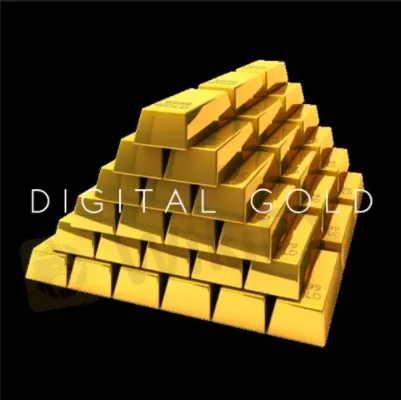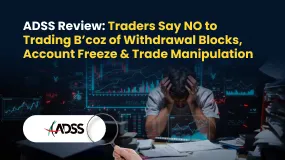简体中文
繁體中文
English
Pусский
日本語
ภาษาไทย
Tiếng Việt
Bahasa Indonesia
Español
हिन्दी
Filippiiniläinen
Français
Deutsch
Português
Türkçe
한국어
العربية
Blockchain tech is making “digital gold” more literal, here's what it means for the gold price
Abstract:Digital Gold
The gold price is providing critical clues about market sentiment, so analysts and retail investors are watching it carefully. The yellow metal's statuses as a safe-haven asset and inflation hedge are up in the air. But what if an individual investor wants to buy gold? It's important to understand the interplay between the spot price and gold and bar prices and how to avoid getting taken advantage of.
One concern the average gold buyer faces is knowing how to spot fake gold bars. However, efforts are underway to use blockchain technology to solve that problem. The London Bullion Market Association is teaming up with the World Gold Council to use the blockchain to track all the gold moving through the global supply chain.
Separately, Emergent Technology Holdings wants to use the blockchain to digitally encode the entire gold supply chain using a digital token backed fully by gold. These two efforts are slightly different, although they share similarities.
LMBA and World Gold Council's plan
The World Gold Council announced its plan with LBMA in a post on its website. The organization describes their Gold Bar Integrity Program as an “international system of gold bar integrity, chain of custody and provenance.” The council hopes consumers, investors and other market participants will be able to trust that their gold is genuine and has been “responsibly and sustainably sourced.”
LBMA and the World Gold Council are launching a pilot phase of their project. The initial phase will utilize the skills of distributed ledger companies aXedras and Peer Ledger.
The two firms will demonstrate how blockchain technology can build a global ecosystem that creates an irrefutable chain of custody for every gold bar that includes its place of origin.
Emergent Technology's plan
While the World Gold Council and LBMA didn't put a timeline on their plan, Emergent Technology wants to digitally encode the gold supply chain during the first half of this year. According to CNBC, the company is creating a digital token backed fully by gold. Emergent hopes to make it easier for investors to trade the metal through increased liquidity.
Additionally, the firm hopes that digitally recording every stage of the supply chain will guarantee the provenance of every piece of gold. Emergent also wants to certify that the metal is sourced responsibly and 99.99% pure. The firm will record all that information on a blockchain to ensure that the data cannot be changed.
Emergent is partnering with Yamana Gold to create gold-backed “g-coins,” with each coin equivalent to one gram of gold and pegged to the metal's spot price. Emergent's plan is for Yamana and other miners to be able to scan “smart chips in tamper-proof seals” using a mobile app and record transfer of custody and other data on the blockchain.
What does all this mean for the price of gold?
There are many other plans for recording gold's provenance on a blockchain. Whichever plan becomes the standard in the gold industry will undoubtedly impact the price of the metal, although perhaps not in the way you might think. The easiest way to see the potential impact is how gold bars and coins are priced.
Most investors who follow the gold price keep track of the spot price, which is the amount you would pay for gold in bulk. However, gold bars are priced higher than the spot price because they include the extra costs associated with processing the metal and forming it into bars.
Gold bar pricing includes costs associated with refining, manufacturing, minting, marketing and warehousing the bars.
If you look at the prices for gold coins, you will typically see that they are even higher than gold bar prices because it costs more to manufacture coins than bars. In the same way, the addition of any kind of recording or tracking system associated with a blockchain is likely to increase the price of gold.
On average, investors should expect to pay 2% to 5% over the spot price for gold bars and coins. The addition of a blockchain tracking system will serve to increase the premium on these gold products.
Where will the spot price for gold go next?
It will be some time before any of the above firms get their blockchain-tracking system for gold in place, further raising the prices of coins and bars. Although you generally can't buy gold at the spot price, tracking it is still an essential aspect of gauging overall sentiment in the market in both the short and long term.
The spot price for gold is in the red as of the time of this writing, but it remains firmly above the key level of $1,900 an ounce. However, the yellow metal did slip below $1,900 briefly on Tuesday, so this level is a key one to watch.
Consumer demand is robust, making things difficult for the yellow metal. On the other hand, the U.S. dollar has declined to its lowest level in a week, which is likely providing some near-term support for gold. Of course, a strong U.S. consumer would usually mean a strengthening dollar, so the downtrend in the greenback looks fragile.
Ukraine and Russia started peace talks, further reducing safe-haven demand for gold. However, peace talks do not mean the two countries will come to a permanent ceasefire agreement, so this fragile situation offers a counterbalance to the U.S. dollar. Both the Ukraine situation and the dollar threaten to reverse course, which would both impact the gold price.
Key support levels and targets
Analysts are watching the gold price carefully due to the confluence of forces working against each other. Experts gave Kitco News various price levels to watch. One analyst set the next significant support level at $1,875 an ounce, while another warned that if $1,880 doesn't hold, the spot price for gold could plunge to as low as $1,830 an ounce.
Others pointed out that gold is facing technical weakness because the price couldn't stay above $1,950 an ounce. Saxo Bank commodity strategy chief Ole Hansen described the failed breakout as “a significant disappointment.”
Blue Line Futures President is neutral on gold in the near term due to the ongoing peace talks between Ukraine and Russia, which have slowed the yellow metal's momentum. However, he is bullish on it in the long term “due to the broader landscape of slower growth, Fed tightening, and inflation,” describing the Ukraine situation as “merely a near-term supportive factor, pulling forward some gains.”
Calls for $2,000 gold
As recently as Friday, some gold bulls were looking to the sky for their price targets. According to Kitco News, some retail investors and analysts weren't giving up on $2,000 gold. Some level of safe-haven demand remains in play as the situation in Ukraine develops. Additionally, broad-based market fear around the globe is offering support for gold amid rising bond yields and hawkish commentary from Federal Reserve Chairman Jerome Powell.
Equity Capital analyst David Madden told Kitco that there was “very little that could derail the rally to higher [gold] prices.” Last week, 71% of the analysts Kitco polled and 72% of the voters in online Main Street polls called for higher gold prices this week.
At this point, it's looking like safe-haven demand for gold is up in the air, but the metal's status as an inflation hedge should provide some support. All eyes will be watching the dollar, bond yields, the peace talks and inflation for clues about where gold will go next.

Disclaimer:
The views in this article only represent the author's personal views, and do not constitute investment advice on this platform. This platform does not guarantee the accuracy, completeness and timeliness of the information in the article, and will not be liable for any loss caused by the use of or reliance on the information in the article.
Read more

Grand Capital Doesn’t Feel GRAND for Traders with Withdrawal Denials & Long Processing Times
The trading environment does not seem that rosy for traders at Grand Capital, a Seychelles-based forex broker. Traders’ requests for withdrawals are alleged to be in the review process for months, making them frustrated and helpless. Despite meeting the guidelines, traders find it hard to withdraw funds, as suggested by their complaints online. What’s also troubling traders are long processing times concerning Grand Capital withdrawals. In this Grand Capital review segment, we have shared some complaints for you to look at. Read on!

EmiraX Markets Withdrawal Issues Exposed
EmiraX Markets Review reveals unregulated status, fake license claims, and withdrawal issues. Stay safe and avoid this broker.

ADSS Review: Traders Say NO to Trading B’coz of Withdrawal Blocks, Account Freeze & Trade Issues
Does ADSS give you plenty of excuses to deny you access to withdrawals? Is your withdrawal request pending for months or years? Do you witness account freezes from the United Arab Emirates-based forex broker? Do you struggle to open and close your forex positions on the ADSS app? Does the customer support service fail to respond to your trading queries? All these issues have become a rage online. In this ADSS Broker review article, we have highlighted actual trader wordings on these issues. Keep reading!

INGOT Brokers Regulation 2025: ASIC vs Offshore License - What Traders Must Know
Explore INGOT Brokers regulation in 2025: Compare their ASIC and Seychelles FSA licenses, understand trader protection levels, and learn about potential risks in this detailed guide.
WikiFX Broker
Latest News
Consob Targets Political Deepfake “Clone Sites” and Unlicensed Platforms in Latest Enforcement Round
WikiEXPO Global Expert Interviews: Gustavo Antonio Montero: ESG in Finance
Mitrade Arabic Platform Targets MENA Gold Trading Boom
Israeli Arrested in Rome Over €50M Forex Scam
Scam Alert: GINKGO-my.com is Draining Millions from Malaysians!
New FCA Consumer Alert 2025: Important Warning for All Consumers
EmiraX Markets Withdrawal Issues Exposed
INGOT Brokers Regulation 2025: ASIC vs Offshore License - What Traders Must Know
Is Upforex Safe or a Scam? A 2025 Safety Review Based on Facts
Polymarket Onboards First US Users Since 2022 Shutdown: Beta Relaunch Signals Major Comeback
Currency Calculator



